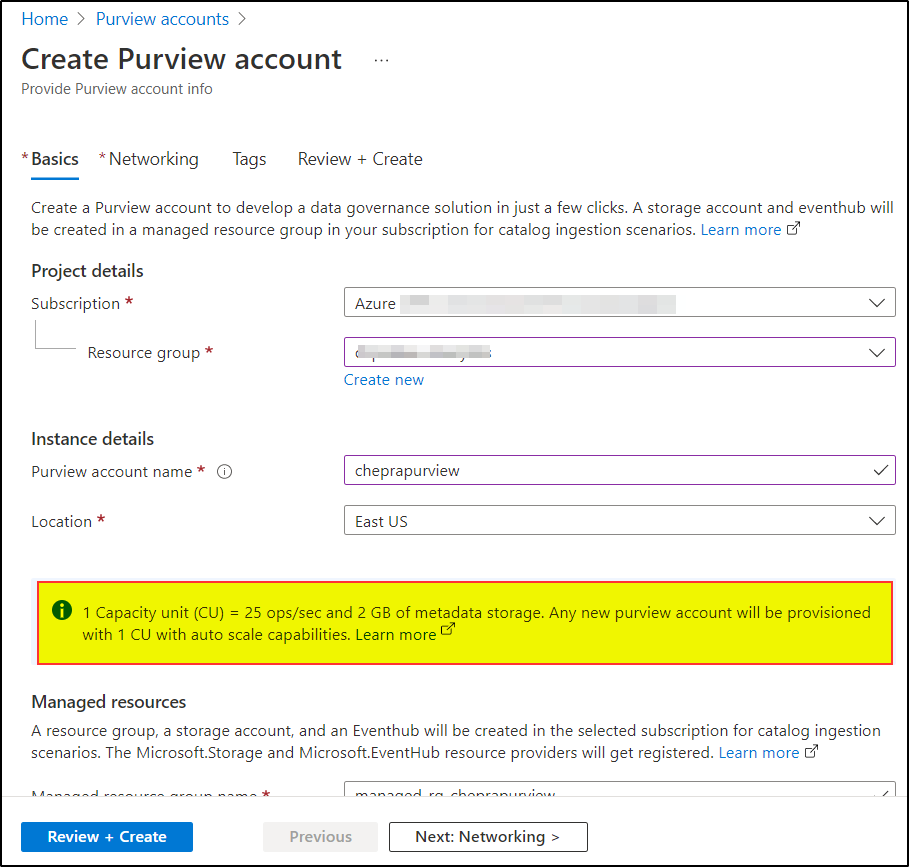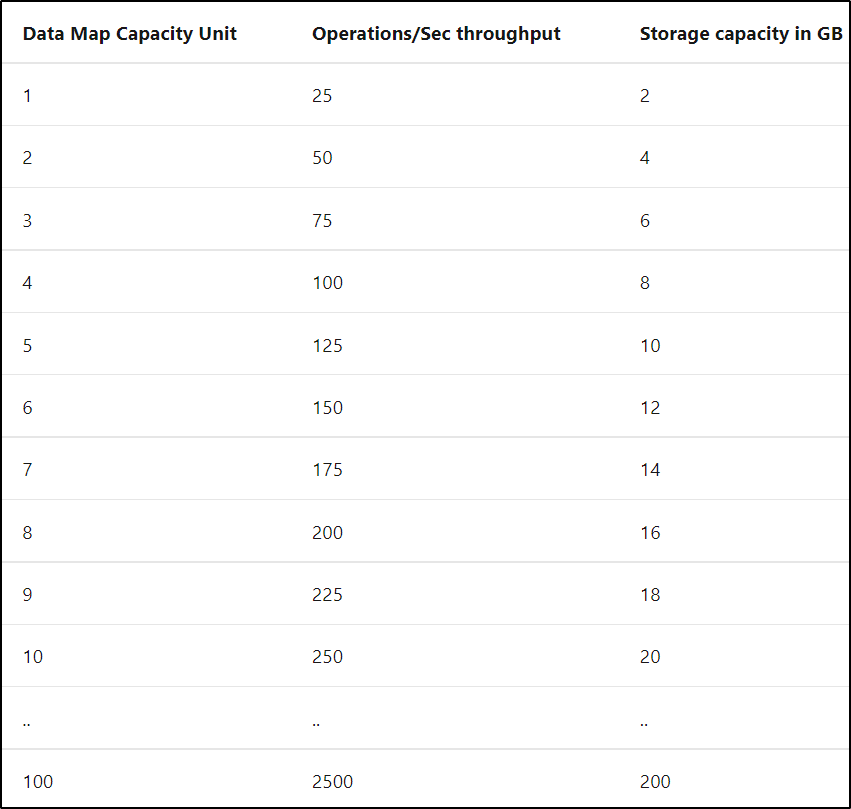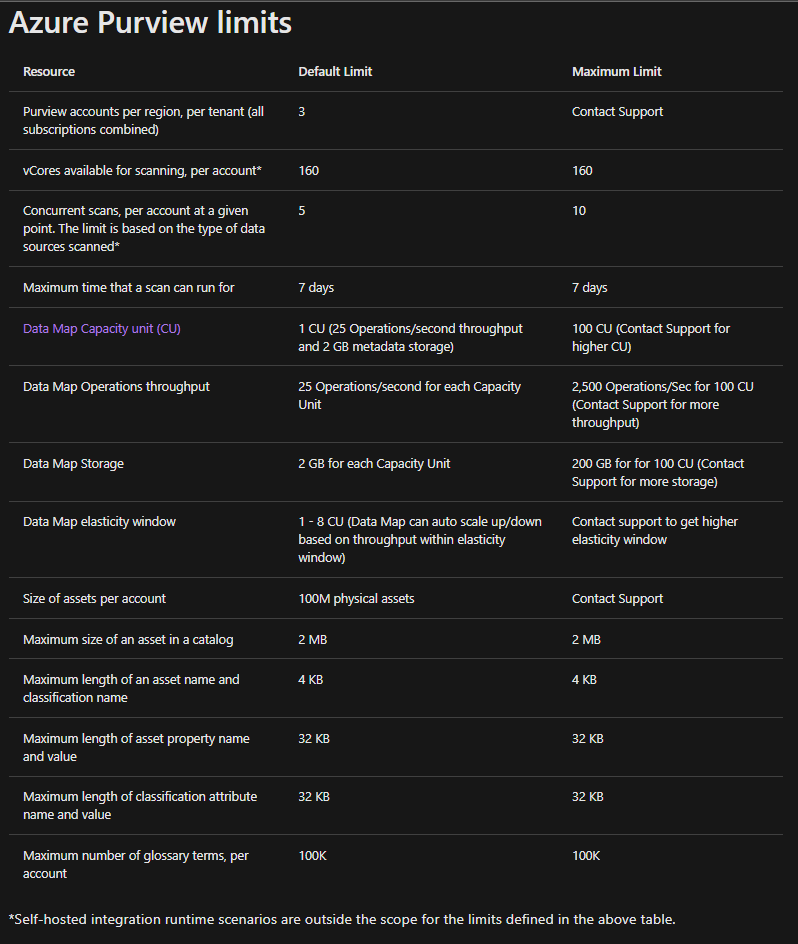Hello @sakuraime ,
Thanks for the question and using MS Q&A platform.
Any new Azure Purview account will be provisioned with Data Map platform size of one capacity unit and elastically grow in increments of one capacity unit based on usage and request load.
Note: 1 Capacity unit (CU) = 25 ops/sec and 2 GB of metadata storage. Any new purview account will be provisioned with 1 CU with auto scale capabilities.

The elastic Data Map automatically scales up and down the capacity units within the elasticity window based on consumption.

Elastic Data Map comes with operation throughput and storage components that are represented as Capacity Unit (CU). All Azure Purview accounts, by default, come with one capacity unit and elastically grow based on usage. Each Data Map capacity unit includes a throughput of 25 operations/sec and 2 GB of metadata storage limit.
Operations: Operations are the throughput measure of the Purview Data Map. They include the Create, Read, Write, Update, and Delete operations on metadata stored in the Data Map. Some examples of operations are listed below:
- Create an asset in Data Map
- Add a relationship to an asset such as owner, steward, parent, lineage, etc.
- Edit an asset to add business metadata such as description, glossary term, etc.
- Keyword search returning results to search result page.
Storage components: Storage is the second component of Data Map and includes technical, business, operational, and semantic metadata.
The technical metadata includes schema, data type, columns, and so on, that are discovered from Purview scanning. The business metadata includes automated (for example, promoted from Power BI datasets, or descriptions from SQL tables) and manual tagging of descriptions, glossary terms, and so on. Examples of semantic metadata include the collection mapping to data sources, or classifications. The operational metadata includes Data factory copy and data flow activity run status, and runs time.
For more details, refer to the link below:
- Elastic data map in Azure Purview
- Automatically scale your catalog with elastic Data Map in Azure Purview
Hope this will help. Please let us know if any further queries.
------------------------------
- Please don't forget to click on
 or upvote
or upvote  button whenever the information provided helps you. Original posters help the community find answers faster by identifying the correct answer. Here is how
button whenever the information provided helps you. Original posters help the community find answers faster by identifying the correct answer. Here is how - Want a reminder to come back and check responses? Here is how to subscribe to a notification
- If you are interested in joining the VM program and help shape the future of Q&A: Here is how you can be part of Q&A Volunteer Moderators

